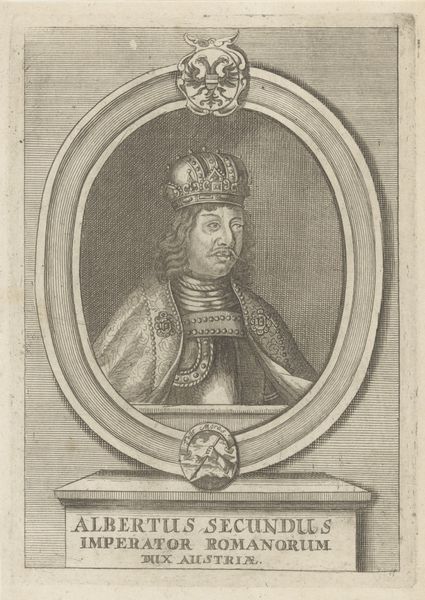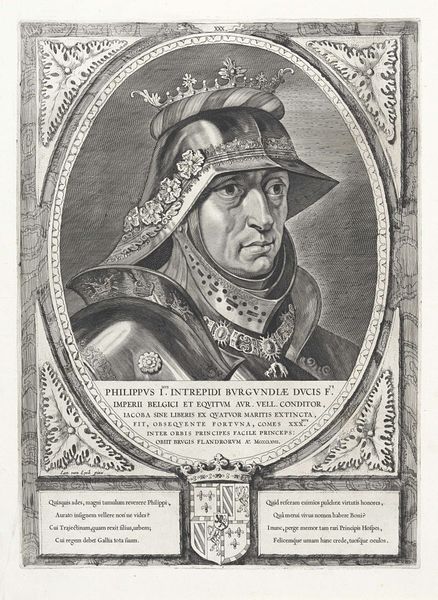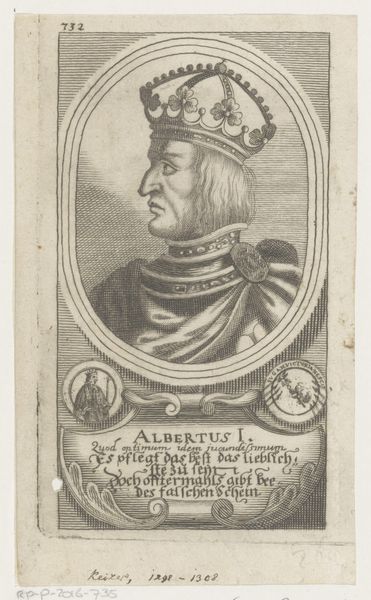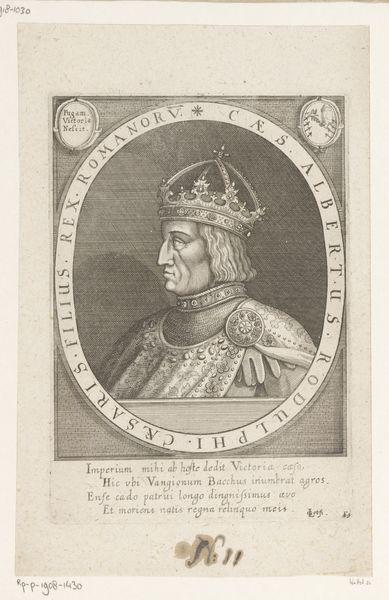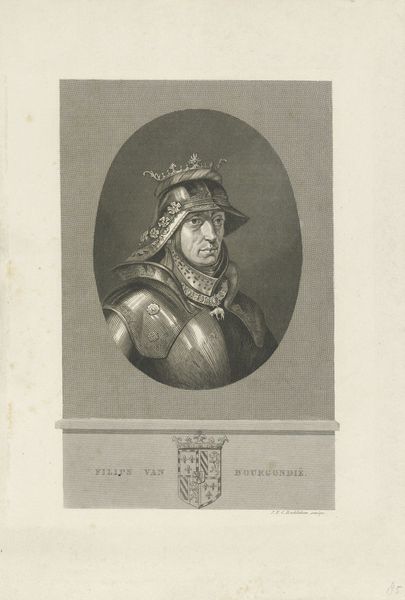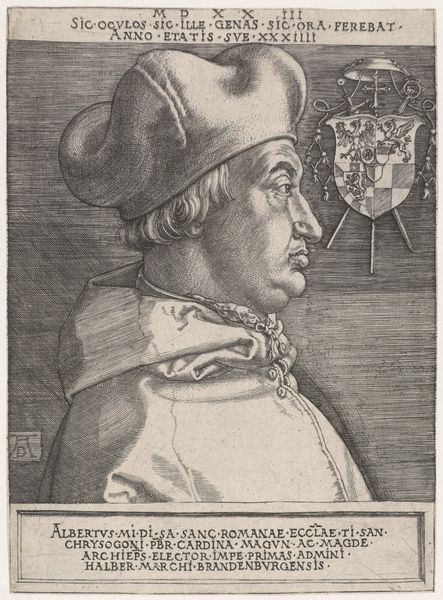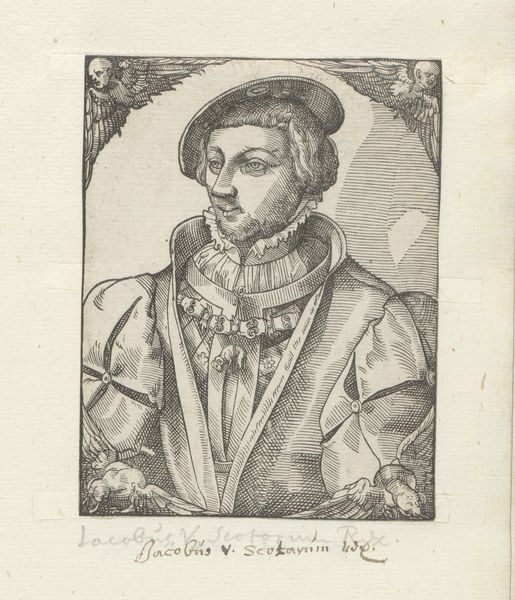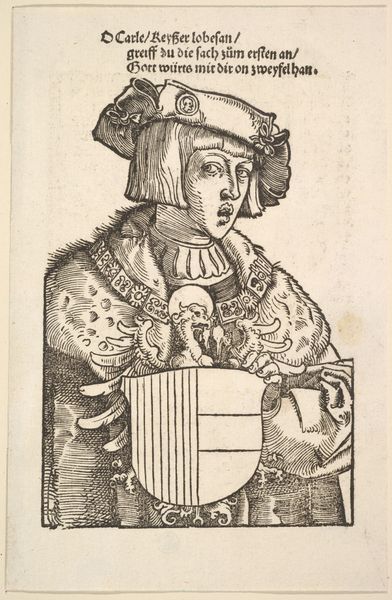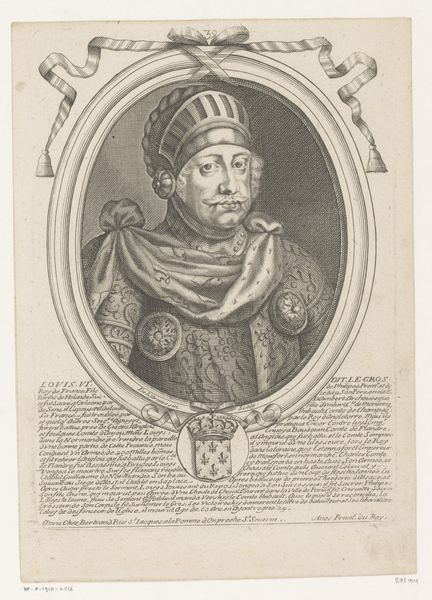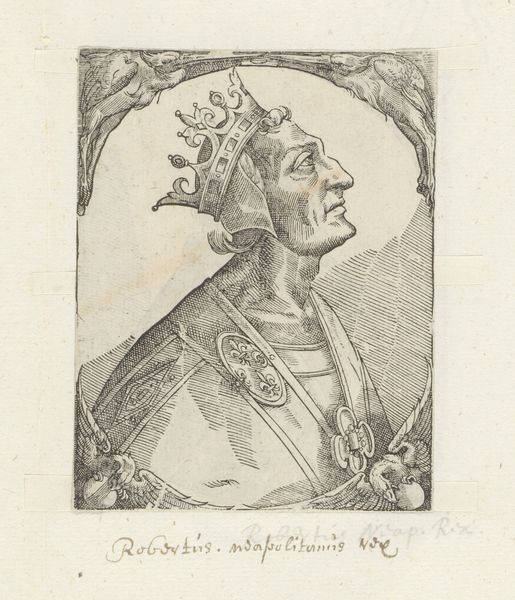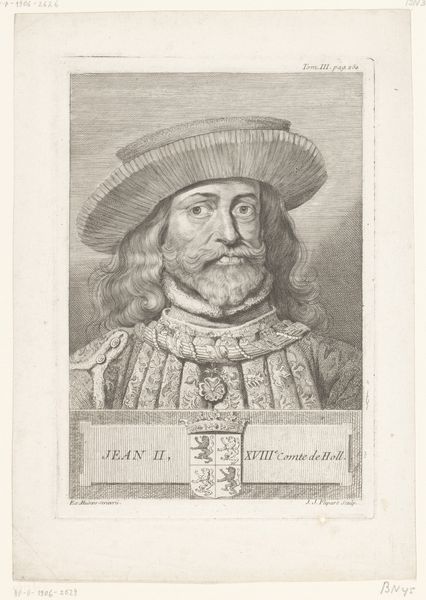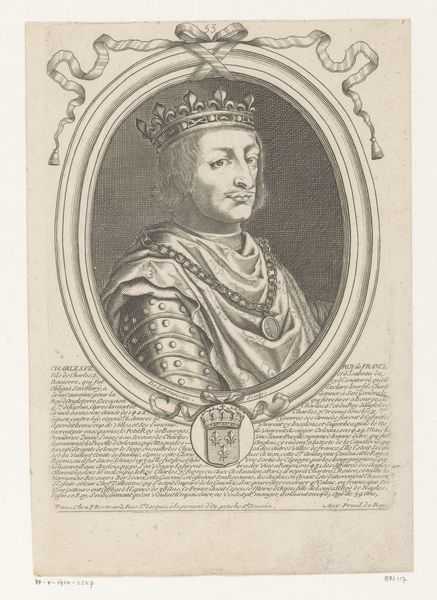
engraving
#
portrait
#
baroque
#
old engraving style
#
19th century
#
history-painting
#
engraving
Dimensions: height 202 mm, width 142 mm
Copyright: Rijks Museum: Open Domain
This print of Philip the Good was made by Jean Jacques Flipart in the 18th century. It is an engraving, meaning that the image you see began as lines cut into a metal plate, which was then inked and pressed onto paper. The crisp precision of this technique is on full display here. Notice how the fine, closely-placed lines create areas of shade, and define the contours of Philip's face and armor. Look closely, and you can see how the engraver varied the thickness and direction of the lines to create a sense of depth and texture. Engraving was a highly skilled, labor-intensive process. In Flipart's time, prints like these were not just works of art, but also a means of mass communication, used to disseminate images and ideas widely. The act of reproducing Philip's likeness speaks to the growing power of the print medium. It also represents the social and economic forces at play, as the labor and skill of the engraver are put in service of representing aristocratic power.
Comments
No comments
Be the first to comment and join the conversation on the ultimate creative platform.
